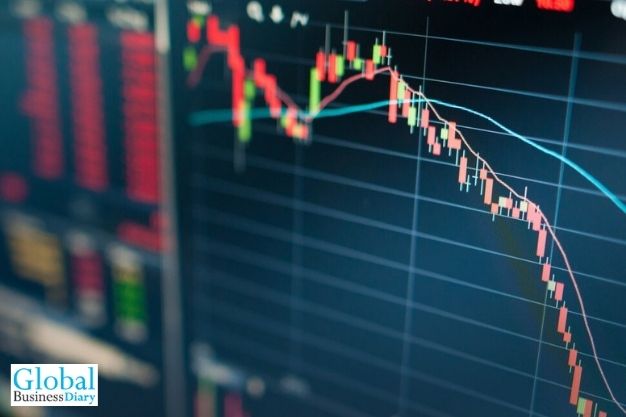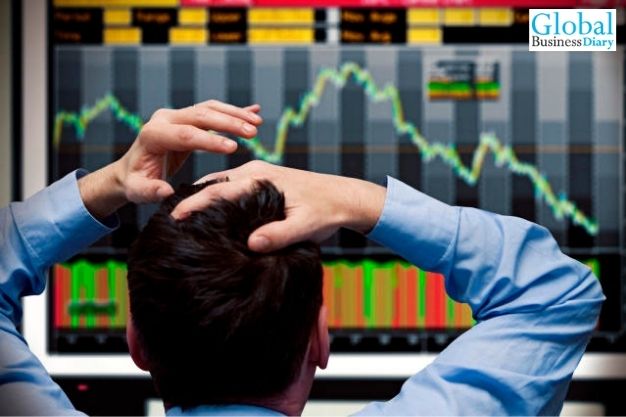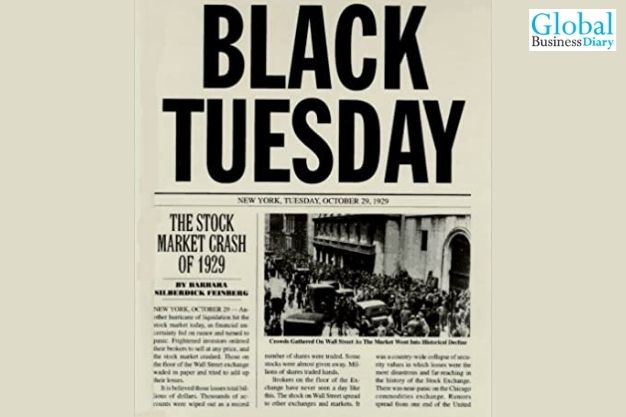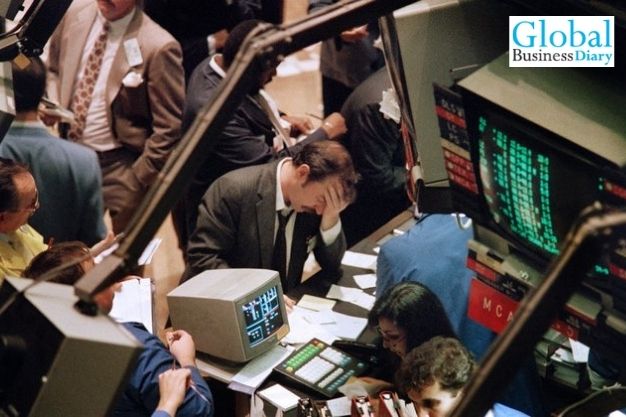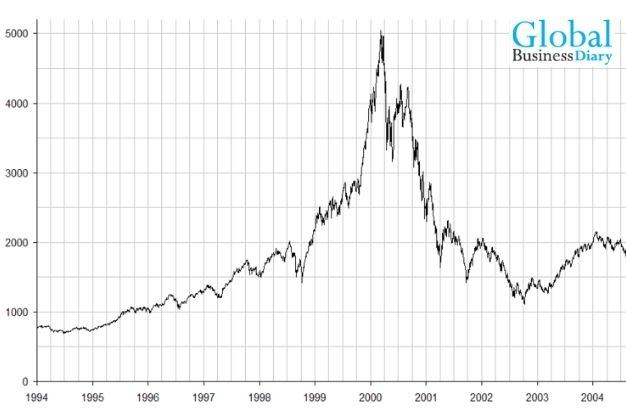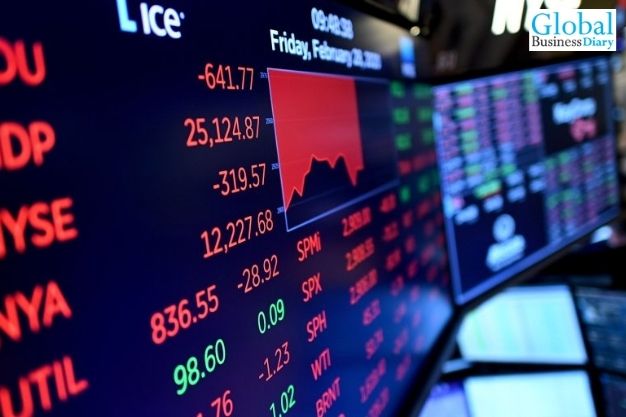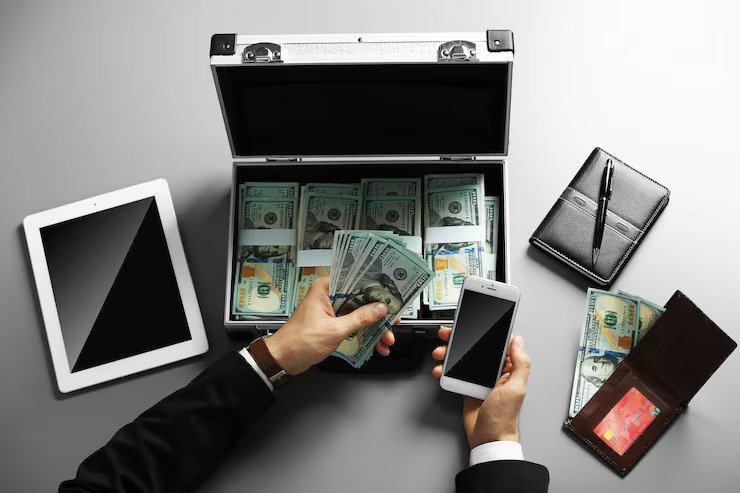Biggest Stock Market Crashes In The World History

The stock market is a triangle industry where a crash takes place when the market value drops in a series. It will be tough to provide a generalized definition of the stock market crash, but it may occur when the price drops more than natural. When the market price decreases and losses 10% from the current value, then people can consider this event as the “great depression.”
In 1929, the marketing industry got 34%. A market crash takes place suddenly. But when it starts falling down, you may know that this is going to be cashed soon. Approximately 25% of workers lost their jobs due to this destruction in the market.
If you are a stock market investor, the market crashing history can provide you with a primary imagination about the stock market. We will tell you how the whole industry flows to the veils in a short period of time. You will learn the history as well as the economy of the stock market world. It took 5 to 10 years naturally to get back to the previous stage.
What Is The Stock Market Crash?
As I have mentioned earlier, it is challenging to offer a generic definition of the stock market crash, but we can tell it is the rapid change of the price in the market. Before crashing a market, the stock market industry always reaches its peak, and from that point, it suddenly drops to the ground.
Generally, stock market crashes happen in a short time period. For example, the price is normal today, and after nightfall, you may see the price drop down to 12%. This is how the market crashed.
If you consider the whole system as a pyramid, you will see in a long time, the price is rising to the top and after reaching its catastrophic position, it suddenly drops. You, as an investor, can predict the market crash beforehand.
When the price is increasing, you have to keep it in mind. However, it will go down all of a sudden. From the steady rising, it comes to the ultimate drop. This is a stock market crash.
Also Read: Angel investors – Overview, pros and cons in 2021
Indications Of Stock Market Crash
When you are a long-term investor, you have knowledge of the stock market. If you have ever followed, will see in a specific time, the market growth is going as a bounce. At this time, you can make an assumption about the market crash. There are more things about the market that you can follow.
When you are in the stock market business, always stay alert and invest money after looking at all aspects. Therefore, let’s get started with the major indications.
- Drastic Speculations.
- Stagnant Market Value.
- Low-Interest Rates.
- Catastrophic Illusion.
- Slow Growth Rates.
- Exceptional Market value.
These are all the things that you can follow through so that you can make an assumption. However, keep all these things in your mind and then step towards your goal.
The Biggest Market Crashes In World History
In world history, many times the market fails and for that thousands of people lose their jobs. You will be surprised to know that after the market crash in 1929, a total of 10% of people lost their jobs.
Generally, there is always a balance between the economy and the stock market industry. When the stock market industry gets injured, it affects the economy on a large scale. Many times, many incidental cases happen in the stock market industry.
For the time being, let’s get up to date with the large world history of stock market crashes.
Black Tuesday Of 1929
One of the major stock market crashes began on 24th October 1929. Although there are some confusions about this theory. Some authorities have opined that the fall began on 18th October.
The same condition went on till 29th October. Mass hysteria was created when a total of 12,894,650 shares were traded. When the price started falling, people tried to get their money out, and for this reason, chaos was also created.
The market first opened with 11% lower than the average. At this time also, people never think that the market will crash. This happened in the next few days when it got more decreased.
Before starting the black day, the market reached its last peak position on 3 September. The situation was not like the previous devastation. Though later it became like that, and mass curiosity was also one of the main reasons.
Black Monday Of 1987
In the year 1987, the market started decreasing. After then, this became devastating for the stock market investors. At that point in time, Dow jones’s market value got decreased up to 22%. Still, now this situation is remarked as one of the major incidents in the world history of the stock market.
From 19th October, the market value started decreasing, and it reached the lowest stage in November. The market lost its stock, and the market value also decreased 20% from the average value. It is said that there were many investors that could manage themselves to get out their stocks.
Whenever this type of incident takes place, you may see the mass hysteria that makes the incident more ridiculous. The same thing happened in the 1987 market loss. This grand loss took years to get the scenario back.
The professional marketers have said later that this incident took place because of the computing trading and as well as for the middle investors. Many of the investors do not even accept these things as the prime reasons, though. It never drops off, only for computing trading and for the trade deficit.
Dot-Com Bubble Of 1999-2000
This dot-com bubble incident took place almost thirty years ago. This is why it is far away from the other types of incidents. You may know this incident from the NASDAQ composite index. Many of the investors inculpated the online market agencies that created chaos among people.
The technology-dominated services created mishaps, and that probably deals the case to the deeper loss. The surge was in 1995 approximately 100 that had increased upto 500 in 2000. From this point in time, the bubble started bursting. Behind the screen, there was a large lake that later came in front.
The overvalued stock was also one of the main reasons for this dot-com bubble case—this time. People just hold their stocks. And when the market value decreased, they all started selling, and the mishap took place.
If they sell the stock at the peak point, then may this incident never happen. This market value remained like that for a long time. It took years to get back to the previous stage of the stock market.
The Stock market is sensitive, and that is why people need to manipulate the channel properly. When any mishap happens, the whole chain breaks off.
Stock Market Crash Due To Covid-19
It is the most current stock market crash that happened, and even its effect is still going on the economy. From the country-based loss, it spread to the international loss. All countries got economic harm from this current market crash.
At the present time, there has been an increase in the number of digital investors that are paying in this market chain through online facilities.
From February onwards, the market started crashing, and that decreased upto 11% to 13% on average. You will be surprised to know from 1987 to the current time; it is the major drop in the history of the stock market.
Before this, the situation never happened like this. The market plunged deeper day by day. Even in the present situation in 2021, the same thing is going on.
The prior amounts and the investment were taken away, but the middle watts remained locked. In the stock market, people spend millions of dollars that the authority has driven out. But still, the mediocre investor’s money got stuck. Due to the pandemic, this marketing scenario is a bit different from other creases.
The prior reason behind this market falls in the unknowingness of people. The business investors and the dealers had no idea about the future going situation, and that is why they took back their stocks. This time, the market goes to the grand fall in a different manner than has a prior reason to fall back.
The Dow declined 9.99% in March. Trillions of dollars are still stuck in the market. But it has no straightforward declaration of the market. We hope this situation will also be overcome at the end of the pandemic situation.
Effects Of Stock Market Crashes
When the stock market is running well, you will see the economy is also growing. In major cases, when the stock market gets stuck, the economy of the country also gets hampered.
On the other hand, the stock market is a large industry where millions of people are investing; some are working on the online trading market. Those who are working on the stock market can lose their jobs when the whole industry breaks down.
When you invest in the stock market, you have to keep in mind you are going to get a profit from the investment. If the market crashes, then you will never get your profit.
The price drop means, in the literary sense the less revenue. And when the revenue is decreased, the investor will receive a bad impact. Through this, people get great depression. The depression situation took place in the previous years. You may take a look at these times.
Also Read: How To Make Money Fast – 5 Strategy To Follow In 2021
Frequently Asked Questions (FAQs)
You may have questions regarding stock market investment. So, let’s get you covered with all aspects as well. Firstly, let’s tell you, when you are thinking of the stock market investment, you have to remove the negative thoughts. Now, take a look.
Q1. Is It Worth Investing In The Stock market?
Ans. Investment in the stock market is a good decision. If you are new in the industry, you may face difficulties. The stock market has an option of earning double the amount from the investment. Experienced investors generally get more profit from their investment. Don’t worry; you will get the same opportunity after learning more things about the stock market.
Q2. Which App Is Best For The Stock Market?
Ans. You can use NSE mobile software for trading. Except that you can go through the NDTV profit, IIFL markets, etc.
You can also buy stocks online with trusted brands like eToro. It’s easy to learn how to buy stocks on eToro by simply following their guides.
Also Read: 10 Best Investment Apps For 2021
Q3. Is The Stock Market Safe To Invest In?
Ans. It is difficult to answer properly. We can tell you that you have to be aware of the market when you will pay. So, start investing today and wait for the profit. If you find difficulties, you can go through the solutions as well. But never ever stop dreaming about getting the best profits.
Q4. What Is The Best Stock Market To Invest In For Beginners?
Ans. There are many investment options. Worldwide, there are many companies finding investors. You append your money there. You can spend money on Amazon, Alphabet, Apple, Facebook, Mastercard, etc. however, you have to start investing from today.
The Bottom Lines
These are all the relevant factors that you need to know before starting an investment in the stock market. Whenever you start investing, make sure that you will be serious about the market factors. The price can increase as well as decrease, so stay aware of the fact.
In addition, we will tell you, try to think of the best things not following the backlogs. When you are doing a business, there is always a chance of loss, but you have to focus on the positive things. Only then will you be able to get the best fruit from trading.
Read More:






